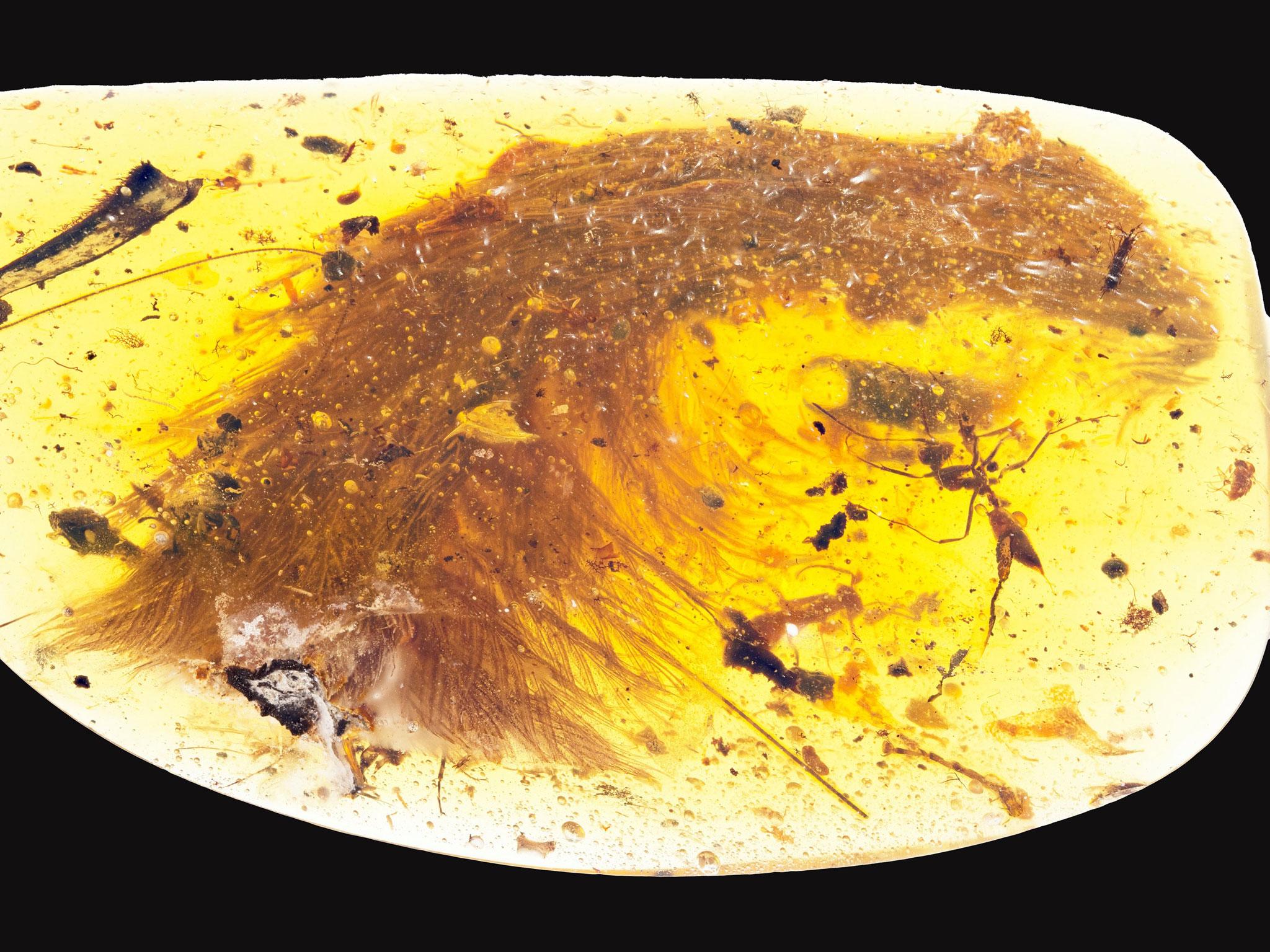Scientists discover 'astonishing' dinosaur tail trapped in amber in unprecedented find
The find has been described as 'astonishing'

Your support helps us to tell the story
From reproductive rights to climate change to Big Tech, The Independent is on the ground when the story is developing. Whether it's investigating the financials of Elon Musk's pro-Trump PAC or producing our latest documentary, 'The A Word', which shines a light on the American women fighting for reproductive rights, we know how important it is to parse out the facts from the messaging.
At such a critical moment in US history, we need reporters on the ground. Your donation allows us to keep sending journalists to speak to both sides of the story.
The Independent is trusted by Americans across the entire political spectrum. And unlike many other quality news outlets, we choose not to lock Americans out of our reporting and analysis with paywalls. We believe quality journalism should be available to everyone, paid for by those who can afford it.
Your support makes all the difference.A piece of feathered dinosaur tail has been found trapped in amber and perfectly preserved for almost 100 million years.
Despite the yawning gulf of time, individual feather fronds can easily be identified. The specimen has even retained signs of its original colour and traces of blood.
Scientists believe the tail belonged to a small juvenile cousin of Tyrannosaurus rex that lived in Asia 99 million years ago.
The 3.6cm lump of amber, which is hardened tree resin, was discovered in a market in Myitkyina, Burma, last year where it had been offered for sale as a curiosity or item of jewellery.
The fossil within it, described as "astonishing" by researchers, was originally mistaken for plant material.
Microscopic examination and CT (computed tomography) X-ray scans confirmed that the tail had come from a flightless dinosaur and not an early species of bird.

Professor Mike Benton, from the School of Earth Sciences at the University of Bristol, said: "It's amazing to see all the details of a dinosaur tail - the bones, flesh, skin and feathers - and to imagine how this little fellow got his tail caught in the resin, and then presumably died because he could not wrestle free.
"There's no thought that dinosaurs could shed their tails, as some lizards do today."
The Bristol team joined colleagues from China and Canada to carry out the analysis, reported in the journal Current Biology.
The specimen consists of eight vertebrae, but is thought to be just a fragment of a complete tail that may have been three times longer.
By looking at the structure of the bones, scientists were able to discount any possibility that it was from a bird.
Dr Ryan McKellar, from the Royal Saskatchewan Museum in Canada, said: "We can be sure of the source because the vertebrae are not fused into a rod, or pygostyle, as in modern birds and their closest relatives. Instead, the tail is long and flexible, with keels of feathers running down each side.
"In other words, the feathers definitely are those of a dinosaur, not a prehistoric bird."
Chemical analysis showed that the soft tissue layer around the bones retained traces of ferrous iron - residue from the animal's blood.
The dinosaur was a "theropod", the large family of mostly carnivorous two-legged beasts to which T. rex belonged.
Writing in the journal, they concluded: "The theropod tail reported here is an astonishing fossil, highlighting the unique preservation potential of amber."
Subscribe to Independent Premium to bookmark this article
Want to bookmark your favourite articles and stories to read or reference later? Start your Independent Premium subscription today.
Join our commenting forum
Join thought-provoking conversations, follow other Independent readers and see their replies
Comments